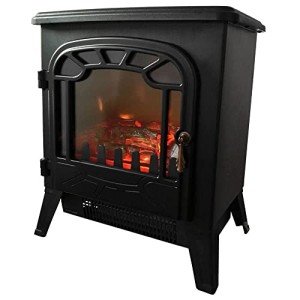The Charm and Functionality of Fireplaces: A Comprehensive Guide
Fireplaces have actually long been a main feature in homes, symbolizing heat, companionship, and convenience. They can be found in various styles, products, and fuel types, accommodating the choices and requirements of diverse property owners. This post looks into the multifaceted world of fireplaces, exploring their history, types, installation factors to consider, and maintenance tips, while providing FAQs to address typical inquiries.
A Brief History of Fireplaces
Historically, fireplaces served as the cornerstone for cooking and heating homes. In ancient times, an open hearth was often positioned in the center of a home. Over centuries, architectural developments helped with the development of more sophisticated designs, developing from basic stone structures to elaborate mantels that preside over modern living areas.
Key Historical Milestones:
- Ancient Times: Open fires in caverns and primitive huts for warmth and cooking.
- Middle Ages: Large, frequently centralized chimney structures in fantastic halls of castles.
- Renaissance: Decorative mantels and styles gain appeal, with the fireplace becoming a sign of wealth and status.
- Industrial Revolution: Advancements in materials and making enable a wider series of fireplace styles.
- Modern Era: Gas and electric fireplaces become prevalent, enabling for increased convenience and security.
Kinds of Fireplaces
Today, numerous kinds of fireplaces are offered, each with its special attributes. Below is a breakdown of the most common types:
| Fireplace Type | Description | Pros | Cons |
|---|---|---|---|
| Wood-Burning | Traditional fireplaces sustained by wood. | Authentic experience, heat output. | Labor-intensive, needs correct venting/maintenance. |
| Gas | Fireplaces that utilize gas or propane. | Easy to use and keep. | Less ambiance compared to wood. |
| Electric | Utilizes electricity to produce heat and flames. | Safe, no venting needed. | Minimal heat output, higher energy costs. |
| Bioethanol | Utilizes bioethanol fuel, producing clean flames. | Ecologically friendly, portable. | Needs regular refueling. |
| Pellet | Uses compressed wood pellets as fuel. | Tidy burning, sustainable. | Needs power for operation. |
Additional Considerations
When picking a fireplace, it is important to consider factors such as:
- Fuel Availability: Consider what fuels are readily accessible in your location.
- Space and Aesthetics: The size of your living location and your style choices ought to assist your option.
- Building Regulations: Always seek advice from local guidelines to guarantee compliance and safety.
Setup Considerations
Setting up a fireplace involves more than merely placing a structure in your house. Electric Fireplaces UK , expert input, and adherence to safety codes are critical. Here are some important actions:
- Planning: Consider the size and type of fireplace, where it will be positioned, and its intended use.
- Assessment: Hire a certified professional to examine your home and make sure proper setup.
- Permits: Obtain any needed structure licenses from local authorities.
- Materials: Select suitable materials for the fireplace and surrounding area. Ensure Cheap Fireplace Online are fireproof and developed for your fuel type.
Upkeep Tips for Fireplaces
Regular maintenance ensures your fireplace operates securely and effectively. Here are essential upkeep ideas classified by fireplace type:
Wood-Burning Fireplaces
- Chimney Cleaning: Have your chimney cleaned up annually to prevent creosote buildup.
- Examine for Damage: Check for cracks and damage to the firebox and chimney structure.
- Firewood Storage: Store fire wood away from the home to avoid bug infestations.
Gas Fireplaces
- Log Inspection: Regularly examine ceramic logs for cracks and change if necessary.
- Vent Cleaning: Ensure that vents are devoid of obstructions.
- Pilot Burner Check: Test pilot lights and ignition systems frequently.
Electric Fireplaces
- Cable Inspection: Frequently examine electrical cables for tearing or use.
- Tidy Surfaces: Wipe down surface areas frequently to get rid of dust and particles.
- Smoke alarm: Ensure smoke detectors in the area are functional.
Bioethanol and Pellet Fireplaces
- Fuel Storage: Store fuels in a cool, dry place away from direct sunlight.
- Routine Refueling: Monitor fuel levels and refuel as required.
- Ventilation: Ensure proper ventilation when utilizing these fireplaces.
FAQs About Fireplaces
Q1: Do I need a license to set up a fireplace?
Yes, most towns need licenses for fireplace setups to make sure safety and compliance with regional building regulations.
Q2: How typically should I clean my chimney?
It is recommended to have your chimney cleaned up at least as soon as a year, specifically if you use your fireplace frequently.
Q3: Can I convert a wood-burning fireplace to gas?
Yes, lots of house owners transform wood-burning fireplaces to gas for convenience, however speaking with a professional is suggested to make sure a proper conversion.
Q4: Do electric fireplaces produce heat?
Yes, electric fireplaces can produce heat; nevertheless, their main function is frequently for ambiance, making them an ideal option for those who desire a fire look without substantial heating.
Q5: Are bioethanol fireplaces safe?
Bioethanol fireplaces are normally safe when used properly; however, they require correct ventilation, and users need to follow all producer guidelines.
Fireplaces not just add visual appeal to homes but likewise supply useful heating solutions. With different types, styles, and upkeep requirements, property owners can make educated choices that best suit their requirements and lifestyles. Whether choosing for the charm of a wood-burning fireplace or the benefit of a gas design, a fireplace can significantly boost a living area's comfort and environment. As the hearth stays a centerpiece in homes, it continues to foster heat, conversation, and connections among household and buddies.

